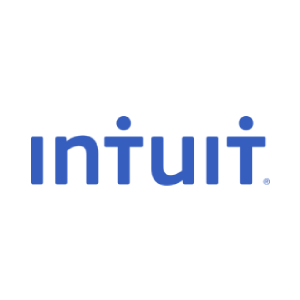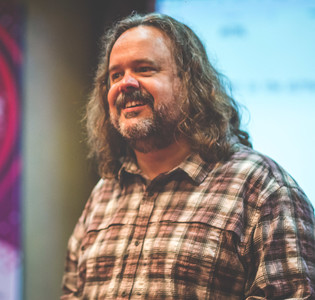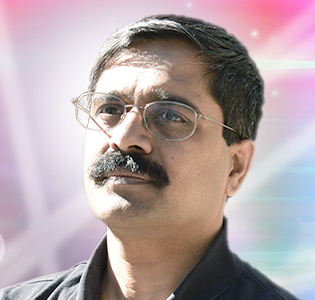
“Once again Saltmarch has knocked it out of the park with interesting speakers, engaging content and challenging ideas. No jetlag fog at all, which counts for how interesting the whole thing was."
Cybersecurity Lead, PwC

The Ashoka Pillars consist of a series of monolithic columns scattered across the Indian subcontinent. These columns were either erected or inscribed with edicts by Emperor Ashoka the Great, who ruled from approximately 268 to 232 BCE. Ashoka referred to them as "Dharma Sthambha" or "pillars of the Dharma," signifying their association with his principles.
Just as the Pillars of Ashoka symbolize the edicts of a visionary ruler, they serve as guiding principles. In the world of DevOps, we find a parallel concept – foundational pillars that lead professionals towards unparalleled excellence. This series explores the alignment between DevOps principles and Ashoka's timeless wisdom, commencing in Part 1 with the fundamental concepts of Unity and Progress.
Emperor Ashoka's vast Mauryan Empire thrived on the principle of unity. Recognizing that prosperity and progress stemmed from a harmonious and collaborative empire, he championed the cause of unity. In the world of DevOps, this principle translates to the paramount importance of collaboration and team dynamics. Bridging gaps, be it between diverse kingdoms or between development and operations, is the cornerstone of success.
Development teams often craft feature-rich applications. But what if the operations team remains in the dark about its infrastructure needs? The outcome is predictable: deployment delays, mounting frustrations, and a tangible loss in business value.
The antidote lies in regular sync-ups, shared documentation, and the adoption of collaborative tools. Platforms like Jira or Trello can be instrumental in tracking progress and understanding interdependencies.
System crashes post a new application deployment are not uncommon. The knee-jerk reaction? Pin the blame - was it a coding glitch or an oversight in infrastructure?
Shift from the blame game to a post-mortem culture. This approach emphasizes collective problem-solving, fostering trust and accelerating solution discovery.
Imagine the chaos when the operations team, unbeknownst to the development team, schedules system maintenance downtime right when a significant release is planned.
Transparency is the key. Adopting tools like Slack or Microsoft Teams to create dedicated communication channels can prevent such overlaps, ensuring everyone stays in the loop.
Spotify, the global music streaming giant, has long been celebrated not only for its vast music library but also for its innovative organizational structure, which promotes unity and collaboration. At the heart of this structure lies the "guild-coordinator" model, which stands as a powerful exemplar of the Pillar of Unity.
In Spotify's world, the organizational hierarchy is flat, with individual teams known as 'squads' enjoying a high degree of autonomy. Each squad is responsible for specific features or aspects of the platform's development, ensuring agility and ownership. However, what truly sets Spotify apart is the existence of 'guilds.'
The "guild-coordinator" model at Spotify exemplifies the Pillar of Unity in DevOps. While squads enjoy autonomy, guilds ensure that knowledge sharing, alignment, and a unified vision are maintained. This model underscores how collaboration can foster not only unity but also knowledge sharing, productivity, and innovation, making it a compelling case study in the realm of DevOps.
Emperor Ashoka's reign bore witness to remarkable infrastructural advancements that transcended the mere physical. These achievements symbolized progress, connectivity, and an unwavering commitment to a forward-looking vision. In the world of DevOps, the resonance is palpable as infrastructure and automation stand as the bedrock of seamless software delivery and operational efficiency.
With companies expanding their services globally, the necessity of setting up servers across multiple regions becomes increasingly apparent. However, the manual configuration of such infrastructures is fraught with challenges, being both time-consuming and prone to errors.
In response to this, Infrastructure as Code (IaC) emerges as the solution of choice. Tools such as Terraform or Ansible empower operations teams to script the entire infrastructure setup, guaranteeing consistency, speed, and repeatability in the process.
In the contemporary software development landscape, frequent updates to applications are par for the course. Yet, the traditional manual deployment process can transform these updates into major, stress-laden events, fraught with potential pitfalls.
Enter Continuous Integration and Continuous Deployment (CI/CD) pipelines, facilitated by like Jenkins or GitLab CI. These pipelines automate the integration of code changes and the subsequent deployment to production. The result? Swift and reliable delivery of features, fixes, and updates without the need for manual intervention.
In the digital world, where user experience is paramount, intermittent slowdowns on an e-commerce platform can be bewildering for operations teams. The lack of real-time insights into system performance only compounds the challenge.
This is where monitoring tools such as Prometheus or Grafana come into play. These tools provide real-time metrics, offering a comprehensive view of system health, traffic loads, and potential bottlenecks. Armed with this data, operations teams can proactively address issues before they impact users and optimize the infrastructure to align with actual usage patterns.
When it comes to the modern age of digital entertainment, Netflix is an undisputed giant. Yet, their success is not solely based on content; it's intricately tied to their mastery of automation. One of their most celebrated tools, known as "Chaos Monkey," exemplifies their commitment to progress and innovation in the DevOps landscape.
Imagine deliberately introducing failures into your production environment—a practice that goes against conventional wisdom. Netflix's "Chaos Monkey" does just that. This audacious tool serves a paramount purpose: to ensure that Netflix's systems are not only robust but also capable of handling failures with grace and resilience.
This real-world example underscores how automation, when approached with innovation and a relentless pursuit of progress, can transform infrastructure management and ensure peak performance in even the most challenging of conditions. Netflix's "Chaos Monkey" isn't just a tool; it's a symbol of the Pillar of Progress in action, guiding the way for DevOps professionals worldwide.
Ashoka's infrastructural marvels symbolized more than just progress; they represented an empire's heartbeat. Similarly, in the DevOps landscape, infrastructure and automation aren't mere tools; they're the driving forces behind innovation, efficiency, and reliability. As we've explored the foundational pillars of Unity and Progress, stay tuned for Part 2, where we'll go deeper into the DevOps journey, drawing further inspiration from Ashoka's timeless wisdom.
Have questions or comments about this article? Reach out to us here.
Banner Image Credits: Attendees at Great International Developer Summit

“Once again Saltmarch has knocked it out of the park with interesting speakers, engaging content and challenging ideas. No jetlag fog at all, which counts for how interesting the whole thing was."
Cybersecurity Lead, PwC

“Very much looking forward to next year. I will be keeping my eye out for the date so I can make sure I lock it in my calendar."
Software Engineering Specialist, Intuit

“Best conference I have ever been to with lots of insights and information on next generation technologies and those that are the need of the hour."
Software Architect, GroupOn

“Happy to meet everyone who came from near and far. Glad to know you've discovered some great lessons here, and glad you joined us for all the discoveries great and small."
Web Architect & Principal Engineer, Scott Davis

“Wonderful set of conferences, well organized, fantastic speakers, and an amazingly interactive set of audience. Thanks for having me at the events!"
Founder of Agile Developer Inc., Dr. Venkat Subramaniam

“What a buzz! The events have been instrumental in bringing the whole software community together. There has been something for everyone from developers to architects to business to vendors. Thanks everyone!"
Voltaire Yap, Global Events Manager, Oracle Corp.